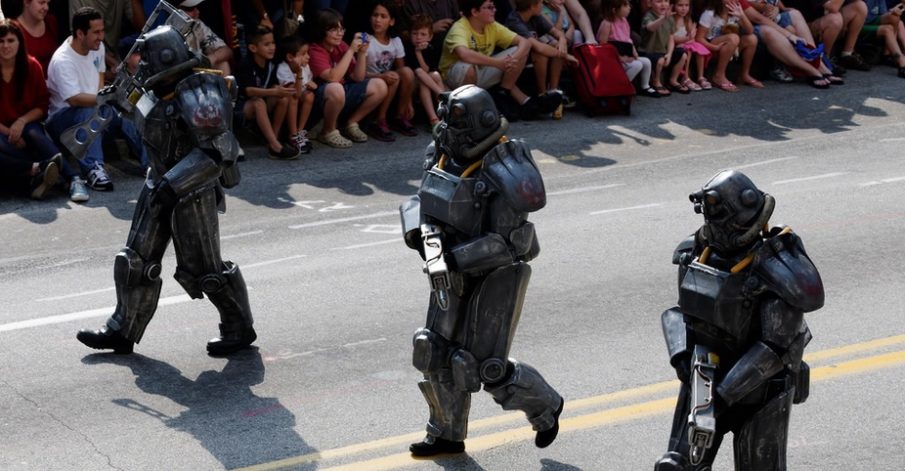Way back in 2013, SOCOM Commander Adm. William McRaven announced plans to develop a high-mobility suit of armor that could better protect the first special operators tasked with entering contested spaces. This new suit was to be developed around an exoskeleton that not only permitted a high degree of mobility, but also bolstered the operator’s natural strength and balance — a necessary augmentation to support ballistic protection and a suite of on-board systems intended to aid in the operator’s ability to engage with opponents once inside.
The program, called TALOS for Tactical Assault Light Operator Suit, was quickly dubbed the “Iron Man” suit by the press, drawing comparisons to the Marvel super hero that uses a bulletproof exo-suit of his own (though a more apt comparison may be the Power Armor depicted in the Fallout Series, as shown above). The first four years of development saw a budget of $80 million, with testing of a near-complete system expected to take place in summer of 2018, but now as summer approached, SOCOM has announced that testing will be pushed back for another year.
TALOS is a unique engineering challenge that seeks to accelerate the development of emerging technologies across multiple domains simultaneously and integrate these disparate technologies into a fully functioning system that is intended to provide decisive advantage to future [special operations forces] in close combat,” Army Col. James Miller, director of Joint Acquisition Task Force (JATF) TALOS, explained about the delay.
Miller did emphasize, however, that the United States Special Operations Command remains highly invested in the TALOS program, calling it their “top research-and-development priority.”
TALOS has maintained a consistent focus on achieving the commander’s vision for the first article prototype combat operator suit. We have not made any major changes in direction over the last three years, although some design accommodations related to size, weight and power across all the subsystems have been made to reduce risk where necessary. I expect some determinations will be made as we near the end of development and subsequent demonstration of the prototype,” Miller said.
Back in December, the Department of Defense released a broad agency announcement seeking developers for the TALOS program that could begin work on a series of technologies expected to be included in the overall TALOS system. These technologies included near-eye displays that can offer the wearer a full field of view augmented by heads up displays and night vision, but contained enough to fit within a helmet that could “minimize traumatic brain injury” if struck.
Other developmental technologies include systems tasked with monitoring the operators’ vital signs, including “electrocardiogram, respiration, core body temperature, blood pressure, etc.”
As easy as Tony Stark made it seem in 2008’s “Iron Man,” the biggest challenges developers seem to be facing with the TALOS system isn’t necessarily developing entirely new technologies, but rather finding ways to mate these disparate systems into one seamless unit that will function with the speed and reliability required for special operations missions. Thus far, four prototypes have been developed with a fifth on the way, but none of have come close to fulfilling the requirements first outlined by McRaven five years ago.
The exoskeleton structure is the most difficult component of the Mark-5 prototype and is highly dependent upon the designs of the other hardware components. System-wide dependencies are complex and extensive,” he added.
Even that Mark-5 prototype, Miller admits, will be a long way off from the suit operators may eventually be donning in combat situations.
We expect that additional prototype combat suits will be necessary to achieve an appropriate technology readiness level for fielding,” he added.
Already have an account? Sign In
Two ways to continue to read this article.
Subscribe
$1.99
every 4 weeks
- Unlimited access to all articles
- Support independent journalism
- Ad-free reading experience
Subscribe Now
Recurring Monthly. Cancel Anytime.
Featured Image Courtesy of Flickr










